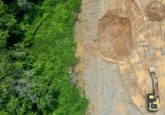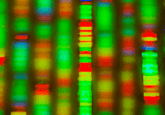Resolving lawsuits and revealing humanity’s genomic history

A recent study has used DNA sequencing to prove the ancestry of a Native American tribe and document the migration of humanity through the Americas.

A study that concluded in 2016 but had its results embargoed until November 2018, has brought a resolution to a 20-year lawsuit and shed new light on the spread of humanity through North and South America. The study was led by Eske Willeslev (Cambridge University, UK and University of Copenhagen, Denmark) and used advanced DNA sequencing technology to establish the genetic heritage of the ‘Spirit Cave Mummy’.
The Spirit Cave Mummy was discovered in the Great Basin Desert (NV, USA) in the 1940s and was originally thought to be between 1500-2000 years old. Following hair and textile testing in the 1990s, the body was in fact found to be 10,600 years old. The Native American Fallon Paiute-Shoshone tribe, which is based near to the burial site, claimed cultural affiliation and requested the remains be returned for burial under the Native American Graves Protection and Repatriation Act. Ancestry was disputed by anthropologists, arguing that the remains were vital to understanding the first inhabitants of North America and should be displayed in a museum. The request was refused and the resulting lawsuit ended in a deadlock between the tribe and the federal government.
Twenty years later, Willeslev, leading an international study to analyze the DNA of 15 ancient genomes from important and controversial remains spanning a region from Alaska to Patagonia, obtained the permission of the tribe to carry out sequencing tests on DNA from the Spirit Cave Mummy. Ensuring members of the tribe were kept well informed and were present when the samples were taken; Willeslev extracted DNA from the petrus bone of the mummy’s skull. After sequencing the DNA, the team found that the Fallon Paiute-Shoshone were in fact descendants of the 10,600 year-old mummy. The remains were returned and a reburial service was conducted at the beginning of this year with Willeslev present.
The results of the overall study have a greater impact than one lawsuit, however, providing an insight into the migration of historic humans across the Americas. The study revealed that populations often separated from one another and moved in small groups. A particularly fascinating discovery was the identification of significant genetic heterogeneity between the 10,600 Spirit Cave Mummy in Nevada and the 10,400 year-old Lagoa Santa remains in southwest Brazil, signifying that it took roughly 200 years for these groups of early humans to travel a distance of over 6000 miles.
“These findings imply that the first peoples were highly skilled at moving rapidly across an utterly unfamiliar and empty landscape. They had a whole continent to themselves and they were traveling great distances at breath-taking speed,” explains David Meltzer (Southern Methodist University; TX, USA).
The researchers also found Australasian ancestry in some of the South American populations after the Spirit Cave-Lagoa Santa split, information that, according to first author on the paper, Victor Moreno-Mayar (University of Copenhagen), ”means groups carrying this genetic signal were either already present in South America when Native Americans reached the region, or Australasian groups arrived later. That this signal has not been previously documented in North America implies that an earlier group possessing it had disappeared or a later arriving group passed through North America without leaving any genetic trace.”
The study also goes on to reveal that populations from Mesoamerica emigrated into North and South America about 8000 years ago, mixing with the existing populations and leading to the contemporary groups now observed in both regions. With all this new genomic information there are now a whole host of new questions and puzzles that need solving to explain some of the genetic traces and inconsistencies that are our only recordings of some extraordinary chapters in human history.





